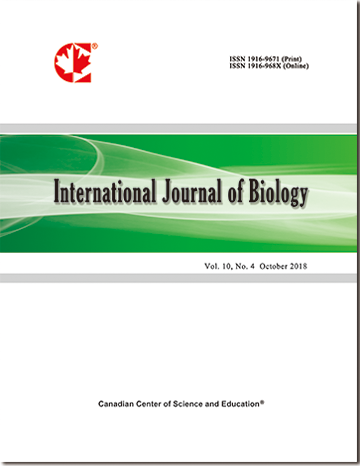Assessment of the Recovering Effects of Protected Areas Using a Multiple Functional Approaches: The Bamboung Model (Senegal, West Africa)
- Djibril FAYE
Abstract
The Bamboung protected area (Senegal, West Africa) has been implemented in 2003. However, little is known about its recovering effects on fish assemblage functional diversity. To address this issue, a morphology-based functional grouping was adopted, and results were compared to prior classifications. Functional richness relative to each guild and species abundance was used to define a functional redundancy index. Morphometric measurements were done in the field on freshly killed specimens and completed by digital image processing using the Image-J software in laboratory. Data relative to biomass and abundance were obtained from the IRD (Research Institute for Development) / Adaptive Response of Fish Assemblages to the Environmental Pressure (RAP) Unit-Research database. Hierarchical clustering, analysis using the ward method, was applied to the matrix of morphological traits to discriminate fish assemblages into four functional guilds: zoobenthos feeders, algivorous / detritivorous fish, benthopelagic fish, and demersal and ichthyophagous fish. The new functional grouping reduced fish assemblage complexity to smaller and more significant units than those obtained from previous gut-content based-classification, and the modifications affecting fish biomass distribution after fishing ban, marked by large predatory fishes domination appeared more perceptible. Classification based on fish life-history traits showed similar results with a domination of fish assemblages by marine species of larger size and upper trophic level. However, this latter approach is still relevant as it provides significant information on fish species mobility and community dynamics. Major observed changes occurred after one to three years of protection. The total fish biomass varied from 6458 kg.km-2 in 2003 to 3114 kg.km-2 in 2007. We hypothesized that collapse in total fish biomass may be explained by predation pressure in the system. Species richness varied from 51 in 2003 to 72 in 2007, while the functional redundancy index showed a decreasing trend indicating a functional diversification in the system subsequent to the reserve establishment. The present study highlights the relevance of multiple approaches model in addressing dynamics of complex systems. However, the present trend does not presage the future evolution in the system, many reserves take over a decade to get a stable state.
- Full Text:
 PDF
PDF
- DOI:10.5539/ijb.v7n3p37
Index
- ACNP
- AGRICOLA
- BASE (Bielefeld Academic Search Engine)
- CAB Abstracts
- CiteFactor
- CNKI Scholar
- CrossRef
- DTU Library
- Elektronische Zeitschriftenbibliothek (EZB)
- Excellence in Research for Australia (ERA)
- Google Scholar
- Infotrieve
- LIVIVO (ZB MED)
- LOCKSS
- Max Planck Institutes
- MIAR
- PKP Open Archives Harvester
- Qualis/CAPES
- ResearchGate
- ROAD
- SafetyLit
- SHERPA/RoMEO
- Technische Informationsbibliothek (TIB)
- Universe Digital Library
- WorldCat
Contact
- Ryan JonesEditorial Assistant
- ijb@ccsenet.org
